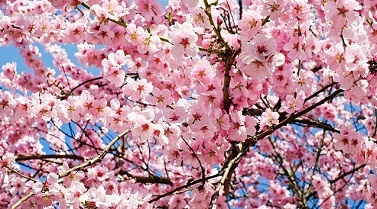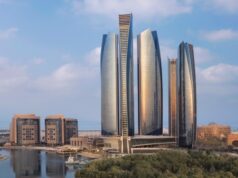 INTERNATIONAL REPORT—Environmental biodiversity plays an integral role in the hotel sector and is a factor that needs considering at every stage of a hotel’s life cycle—from planning through to closure. Despite their dependence on, and interconnection with, biodiversity, hotels and resorts often have significant negative impacts on natural resources and surrounding habitats. Hotel owners must, therefore, seek ways to protect the biodiversity and natural habitats that their business might impact.
INTERNATIONAL REPORT—Environmental biodiversity plays an integral role in the hotel sector and is a factor that needs considering at every stage of a hotel’s life cycle—from planning through to closure. Despite their dependence on, and interconnection with, biodiversity, hotels and resorts often have significant negative impacts on natural resources and surrounding habitats. Hotel owners must, therefore, seek ways to protect the biodiversity and natural habitats that their business might impact.
How to Minimize Impacts on Biodiversity
The potential impact that the very presence of a hotel could have on local biodiversity must be considered by the property owner from the start—before construction begins.
Book an Ecology Survey
Business owners who wish to commission the construction of a new building must first seek planning permission, and in order to obtain this, an ecology survey will likely be required. An ecology survey is necessary to identify the presence of wildlife, particularly any European Protected Species. The findings will play a role in determining the outcome of the planning permission request. If certain species are found then it might be that permission is denied, or that the property owner must put ecological mitigation actions into place.
Consider Noise & Light Pollution
To help minimize the effects on local biodiversity, hotel architects must consider noise and light pollution in the building’s design. This is not only relevant during construction, but also when the hotel is in use. If the hotel is expected to see high numbers of guests of all ages, the building should be designed with this in mind—such as with soundproof walls, and buffers around communal areas in the form of walls or trees. This is also true of lighting—if the hotel needs to be illuminated in the evening, lights such as lanterns or lampposts should be encompassed by natural barriers.
Plant Well-Considered Flora
A substantial amount of greenery is beneficial to hotels both aesthetically and environmentally. When deciding on what species to plant, hotel owners and designers should consider which plants can be maintained with low—or preferably no—use of chemicals. Trees, shrubs, and flowers should be present to protect biodiversity and encourage more species, as well as assist in limiting light and noise pollution. Those that don’t require chemical-based fertilizers and insecticides will have a far better environmental impact.
Provide Natural Habitats
To support local biodiversity, a hotel premises should offer an abundance of wildlife habitats. This could be in the form of plants and trees but could also be carefully thought out garden and grounds design. Many species enjoy protection from dark, covered areas, such as behind sheds and in between plants, pots and fences. Using manmade structures that have been created out of natural materials, such as bee and bug hotels and hedgehog homes, will also encourage more wildlife to thrive.
How to Protect the Natural Habitats in Hotel Grounds
In an existing property, or after a hotel has been constructed, the hotel manager should implement various strategies to protect and encourage natural habitats, while the resort is in use.
Maintaining Gardens
Hotel Managers should instruct gardeners and groundskeepers to focus in part on biodiversity in the hotel’s grounds. This should be by using natural methods to maintain plants—such as with no harsh chemicals—and by planting new flora that will provide habitats and sustenance for various species. Consider:
- Lavender for bees;
- Buddleja for butterflies;
- Honeysuckle and ivy for birds; and
- Cherry trees for hedgehogs.
Supporting Existing Species
Any species that were identified in the original ecology survey, or any that become apparent over time, should be protected as much as possible. This can be done in a few different ways, such as avoiding the use of chemical products in the garden and by providing a barrier for habitats. For example, if badger setts are noticed in the grounds, find a way to stop guests from getting too close to them, such as with a fence or by sheltering them with shrubbery.
Minimizing Light & Noise Pollution
In a functioning hotel, the best way to curb light and noise pollution is to put certain rules and restrictions into place. This could be by giving guests a curfew, or by closing public areas during specific times.
Supporting Local Conservation Efforts
A wonderful way for a hotel to complement local biodiversity, and to become more integrated into the community, is to get involved with conservation projects happening nearby. Environmental groups all over regularly set up initiatives that are designed to help protect local species, so it should not be difficult to find a scheme to get involved with. Whether this involves giving up staff time to help with a project or offering hotel premises as a meeting point for the group, there are various ways to get involved and support the cause.
Hotel owners, managers, and staff all have a responsibility to support the environment, and finding ways to protect local biodiversity is an integral part of this. In addition to adhering to recycling schemes and minimizing energy use, actively supporting wildlife in a hotel’s grounds is an effective way to “do your part” for the environment at this stage in the 21st century.
The article was produced in collaboration with Thomson EC, a leading U.K.-based environmental consultancy providing pragmatic advice on all ecosystems, ensuring you meet environmental compliance on your next project.







